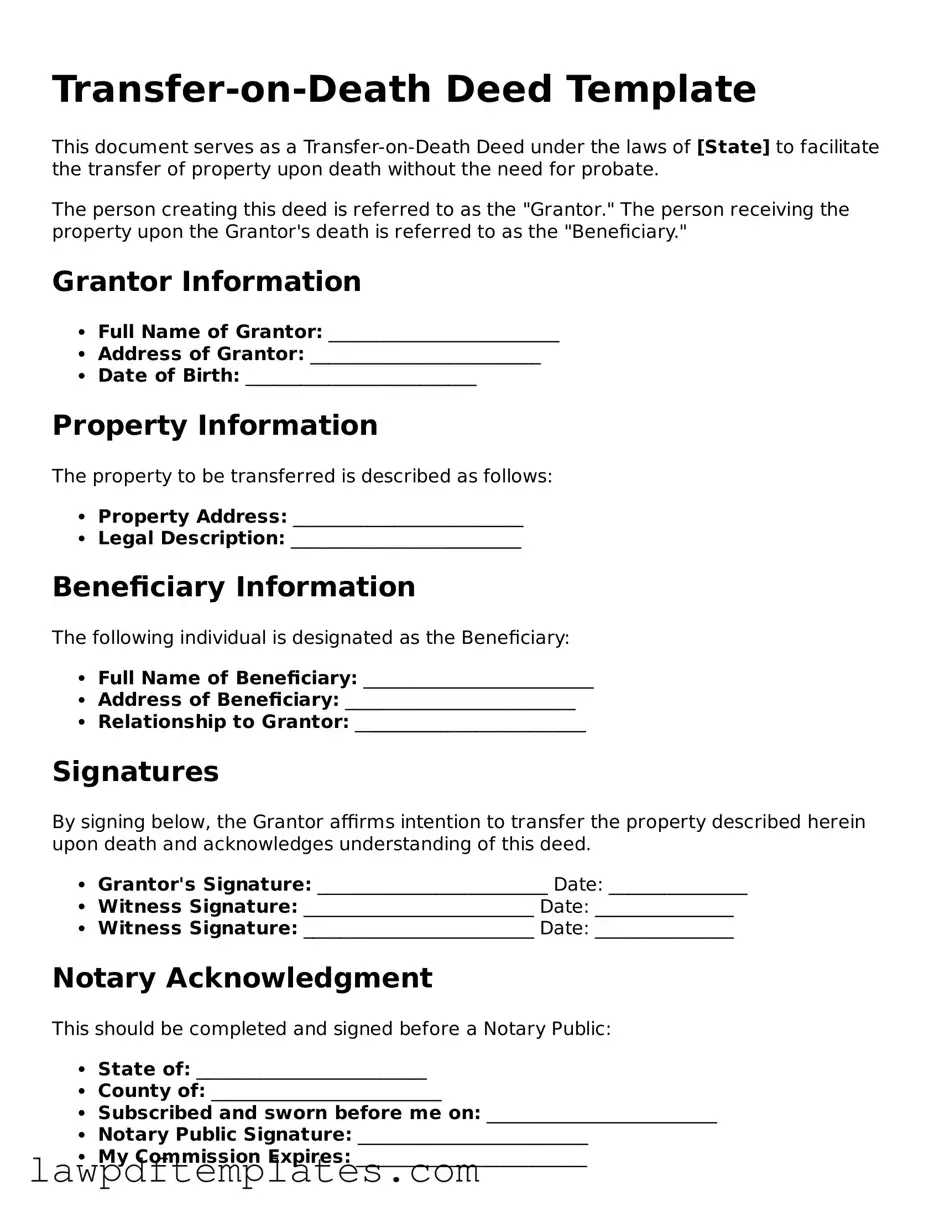Transfer-on-Death Deed Template
This document serves as a Transfer-on-Death Deed under the laws of [State] to facilitate the transfer of property upon death without the need for probate.
The person creating this deed is referred to as the "Grantor." The person receiving the property upon the Grantor's death is referred to as the "Beneficiary."
Grantor Information
- Full Name of Grantor: _________________________
- Address of Grantor: _________________________
- Date of Birth: _________________________
Property Information
The property to be transferred is described as follows:
- Property Address: _________________________
- Legal Description: _________________________
Beneficiary Information
The following individual is designated as the Beneficiary:
- Full Name of Beneficiary: _________________________
- Address of Beneficiary: _________________________
- Relationship to Grantor: _________________________
Signatures
By signing below, the Grantor affirms intention to transfer the property described herein upon death and acknowledges understanding of this deed.
- Grantor's Signature: _________________________ Date: _______________
- Witness Signature: _________________________ Date: _______________
- Witness Signature: _________________________ Date: _______________
Notary Acknowledgment
This should be completed and signed before a Notary Public:
- State of: _________________________
- County of: _________________________
- Subscribed and sworn before me on: _________________________
- Notary Public Signature: _________________________
- My Commission Expires: _________________________
Please ensure that this document is filed according to the laws governing Transfer-on-Death Deeds in [State].
